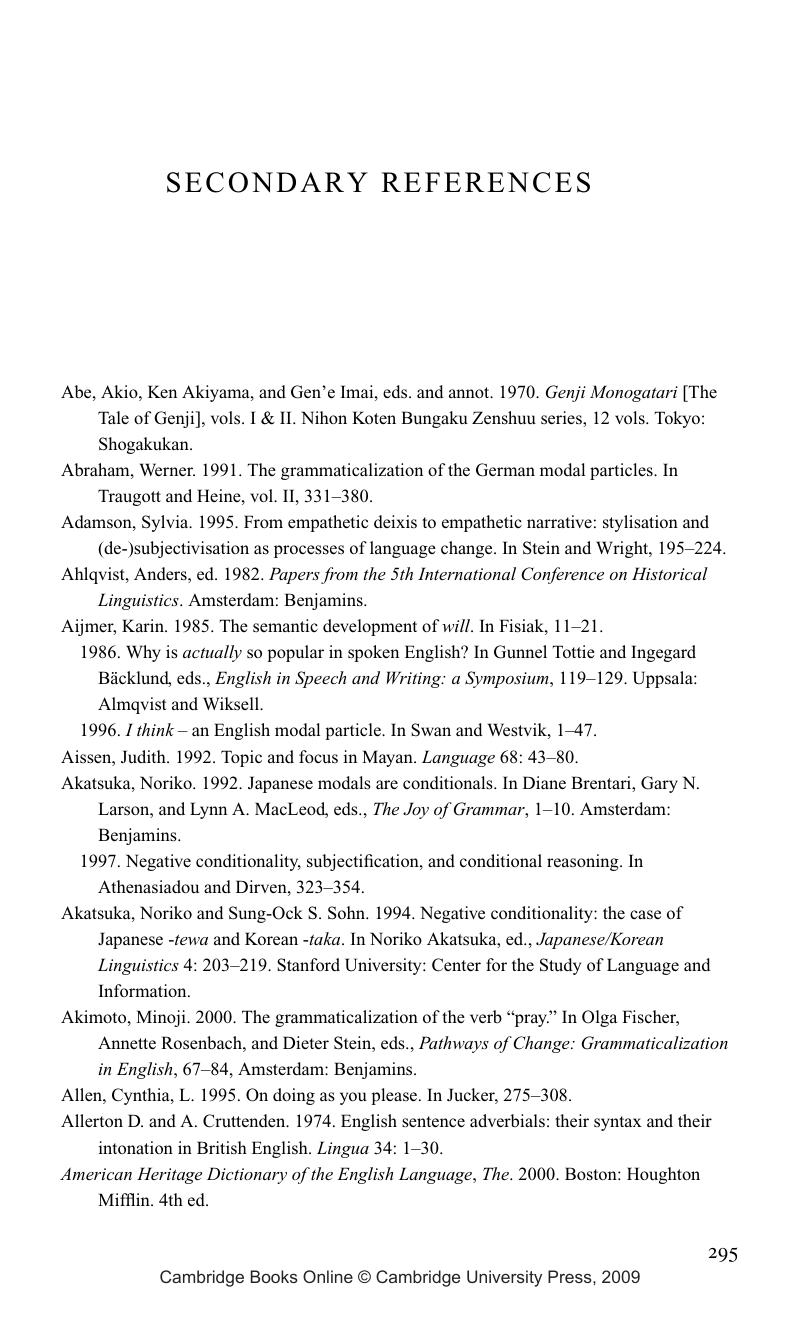Book contents
- Frontmatter
- Contents
- List of figures
- Preface and Acknowledgments
- Conventions
- List of abbreviations
- 1 The framework
- 2 Prior and current work on semantic change
- 3 The development of modal verbs
- 4 The development of adverbials with discourse marker function
- 5 The development of performative verbs and constructions
- 6 The development of social deictics
- 7 Conclusion
- Primary references
- Secondary references
- Index of languages
- Index of names
- General index
- References
Secondary references
Published online by Cambridge University Press: 22 September 2009
- Frontmatter
- Contents
- List of figures
- Preface and Acknowledgments
- Conventions
- List of abbreviations
- 1 The framework
- 2 Prior and current work on semantic change
- 3 The development of modal verbs
- 4 The development of adverbials with discourse marker function
- 5 The development of performative verbs and constructions
- 6 The development of social deictics
- 7 Conclusion
- Primary references
- Secondary references
- Index of languages
- Index of names
- General index
- References
Summary

Information
- Type
- Chapter
- Information
- Regularity in Semantic Change , pp. 295 - 327Publisher: Cambridge University PressPrint publication year: 2001
